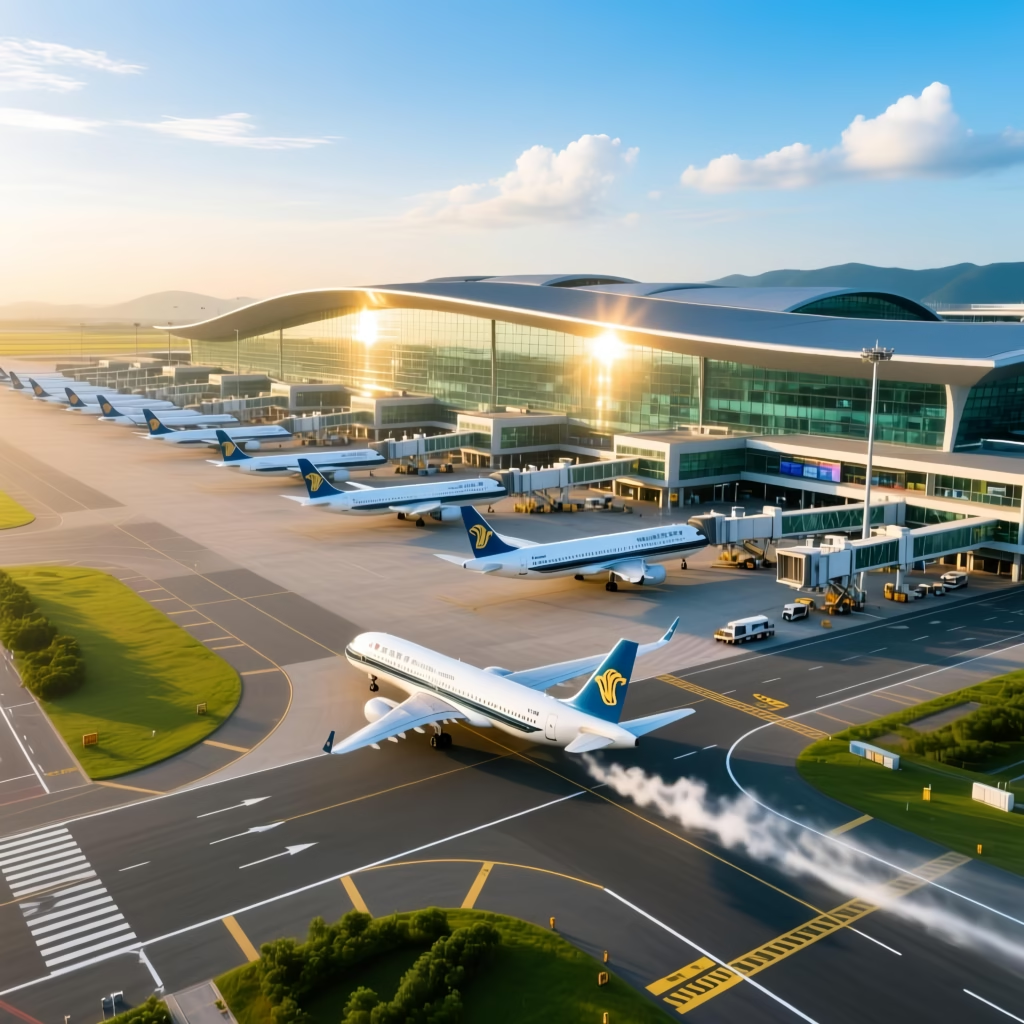EU customs pre-clearance system: A 2025 playbook for EU‑China buyers sourcing in China.
You want predictable landings, not surprise invoices. If your EU-bound shipments keep getting flagged for extra checks, if duties and VAT swing your margins by several points, or if your product labels keep triggering relabelling at the border, this guide is for you. We’ll turn customs pre-clearance, DPP, labeling, tax math, and routing choices into a single, practical workflow you can actually run with your supplier—and sleep better on launch week.
What “EU customs pre-clearance” really means in 2025
Pre-clearance is not a magic stamp—it’s a data discipline. Done right, you secure a “green lane” experience: risk scored before arrival, customs value pre-agreed, and release upon landing with minimal friction.
Core concepts and moving parts
Pre-arrival security filing (ENS under ICS2): What it is: Your Entry Summary Declaration with shipment and party data submitted before departure. Why it matters: Early risk assessment prevents last‑minute holds and “Do Not Load” surprises. What to prepare: HS code, description, weight, consignor/consignee, EORI, transport leg details.
Pre-lodgement of import declaration: What it is: Submit your customs import declaration (DAU/SAD) before arrival, including customs value and origin proof. Why it matters: Enables immediate release when the vessel/flight arrives, subject to risk result. What to prepare: Commercial invoice, packing list, freight/insurance breakdown, origin docs, licenses.
Centralised clearance and AEO leverage: What it is: Use one member state’s customs to clear goods arriving across the EU; Authorised Economic Operator status boosts trust. Why it matters: Fewer inspections, prioritized treatment, and simplified procedures.
Data prerequisites you must lock down with your supplier:
- HS classification: Correct to 6–10 digits with binding logic.
- Customs valuation: Transaction value plus freight and insurance to EU border; add assists/royalties when applicable.
- Origin determination: Non‑preferential vs. preferential origin for duty breaks under FTAs.
- Party identifiers: EORI, IOSS (if applicable), VAT IDs, and accurate consignee details.
A pre-clearance checklist you can copy
Product data room: Include: Spec sheets, BOM, HS rationale, testing reports, certifications, label artwork, serials/GTIN.
Document pack: Include: Commercial invoice, packing list, freight/insurance proof, origin certificate, licenses (if any).
Digital readiness: Include: API/EDI connectivity with your forwarder/broker, ability to submit ENS and import declarations ahead of time.
Compliance guardrails: Include: Restricted party screening, dual-use checks, and product-specific rules (batteries, chemicals, radio equipment).
EU import tax calculator 2025: How to get your landed cost right
You don’t need a fancy app to avoid margin shocks. You need a repeatable formula, clear inputs, and a sanity check for edge cases like anti‑dumping or excise.
The universal formula
- Customs value (CIF to EU border):
- Customs Value=Product Price+Freight to EU+Insurance
- Customs duty:
- Duty=Customs Value×Tariff Rate
- Import VAT (by member state):
- Import VAT=(Customs Value+Duty+Other Import Charges)×VAT Rate
- Total landed cost:
- Landed Cost=Customs Value+Duty+Import VAT+Brokerage/Port Fees
- Edge cases to check:
- Anti‑dumping duty (ADD), countervailing duty (CVD), excise taxes (e.g., alcohol, energy products), plastic packaging taxes in some countries.
A worked example
Scenario: Electronics accessory shipping to Germany (example rates).
Inputs:
- Product price: €10,000
- Freight + insurance: €1,000
- Tariff rate: 2.7% (illustrative)
- VAT rate (DE): 19%
Steps:
- Customs value: 10,000+1,000=€11,000
- Duty: €11,000×0.027=€297
- Import VAT: (€11,000+€297)×0.19=€2,145
- Landed cost (pre-port fees): €11,000+€297+€2,145=€13,442
Quick sanity checks: If you ship to the Netherlands or France, swap in their standard VAT rates. If your product has a preferential origin under an FTA (e.g., EU‑Vietnam), tariff rate may drop to 0% with valid proof.
EU digital product passport (DPP) and labeling: What changes, and how to be ready
DPP will make product data as visible as your brand. Early movers can turn compliance into conversion by using verifiable product stories and faster customs clearance.
DPP: What it is and where to start
- Scope and trajectory: Focus: Batteries first (battery passport under the new EU Battery Regulation), then textiles, electronics, and other categories via the Ecodesign for Sustainable Products Regulation (ESPR).
- Data you’ll likely need to capture:
- Material composition and recycled content
- Serial/lot traceability
- Repairability, durability metrics
- Environmental footprint data (e.g., energy use)
- Compliance certificates and test results
- Implementation playbook:
- Data model: Define fields at SKU/lot level; align with your supplier’s ERP/MES.
- Identifiers: Give each item a unique ID; map to GTIN/serial.
- Access layer: QR/NFC on-product, plus a web-accessible record with role-based views.
- Governance: Change control, audit trails, and retention policies.
EU product labeling requirements you shouldn’t gamble with
Horizontal frameworks: CE marking (safety/EMC/RED), RoHS/WEEE, REACH/CLP for chemicals, energy labels for appliances.
Category specifics: Textile fiber content and care, toy safety (EN 71), food contact materials (FCM), batteries (collection and symbols), radio equipment (RED) language/user info.
Label design checklist:
- Mandatory symbols and marks present
- Language compliance for user instructions
- Importer/EC representative address on the label or packaging
- Batch/serial for traceability
- Eco-labels/energy grades where applicable
Documents to keep (for market surveillance and customs): EU Declaration of Conformity, test reports, technical file, risk assessment, label artwork proofs.
EU‑China freight forwarding and the EU‑ASEAN trade corridor
Choosing the wrong corridor can cost you weeks and wreck your launch. The right one balances speed, predictability, and risk.
Route options and when to use them
| Mode/corridor | Typical use case | Transit reliability | Cost profile | Risk notes |
|---|---|---|---|---|
| Sea FCL/LCL (CN → EU) | Bulk replenishment, stable SKUs | Medium | Low | Port congestion, peak season surcharges |
| Rail (China Railway Express) | Mid-speed to CEE/NWE, medium value goods | Medium | Medium | Geopolitical routing shifts, capacity swings |
| Air | Launches, high-value or urgent replenishment | High | High | Volatile fuel/peak surcharges |
| Sea–air via ASEAN hubs (e.g., Singapore) | Time/cost compromise for EU | Medium–High | Medium | Slot coordination, transshipment complexity |
Practical tip: If your EU pre-clearance is tight and labeling is final, sea–air via Singapore can cut 5–10 days versus pure ocean to certain markets, with far steadier reliability than last‑minute air.
How the EU‑ASEAN corridor helps EU importers sourcing in China
Flex capacity: Use case: Ocean leg CN → ASEAN hub, switch to air for EU peak or urgent orders.
Risk diversification: Benefit: Avoid single‑port bottlenecks; maintain schedule integrity when North Europe gets congested.
Customs readiness: Action: Finalize ENS data and import declaration during the ocean leg; hit the EU with a fully pre‑cleared file.
Two real-world styled case studies
- Case 1: Electronics to Germany with pre-clearance and DPP‑ready labeling
- Challenge: First EU launch; prior shipments faced holds for vague descriptions and missing importer details.
- What we changed: Locked HS code logic and value elements, added EU importer address on packaging, pre‑lodged import declaration, attached battery documentation and DoC in the data room.
- Result: Arrived at Hamburg, released within hours; landed cost variance <1% vs. estimate; retail launch on schedule.
- Case 2: Fashion accessories via EU‑ASEAN sea–air corridor to France
- Challenge: Marketing date fixed; pure ocean risked missing by 12 days.
- What we changed: Sailed to Singapore, swapped to EU-bound air; pre‑clearance submitted mid‑voyage with IOSS for low‑value SKUs.
- Result: Delivery beat launch by 3 days; margin held due to mixed routing (sea base + targeted air).
your may also want to read: Rail Freight From China to Europe
Implementation blueprint: From PO to clearance
At purchase order (PO): Lock: HS code, preferential origin potential, labeling artworks, importer/EORI, target member state VAT handling.
Before production finish: Verify: Test reports, DoC drafts, DPP fields (if in scope), serial/lot formats.
At booking: Provide: Full invoice/packing, freight/insurance estimates, ENS data file, product compliance pack.
In transit: Run: Pre‑lodgement of import declaration; reconcile values; check for ADD/CVD/excise exposure.
At arrival: Execute: Release with agreed procedure (temporary storage vs. immediate release), deliver to final DC with labeling intact.
After delivery: Archive: Full audit trail; update your landed cost model with actuals for the next PO.
What Langxu Freight can do for you
EU pre-clearance as a service: Deliverable: ENS filing, import pre‑lodgement, HS ruling support, customs valuation review, AEO‑grade workflows.
Compliance-in-the-box: Deliverable: Label artwork checks, technical file assembly, DPP data scaffolding, battery/RED/REACH advisory.
Routing strategy: Deliverable: Ocean/rail/air and EU‑ASEAN sea–air design, with capacity hedges for peak season.
Predictable landed costs: Deliverable: Duty/VAT simulations, ADD/CVD watch, exception playbooks.
Systems: Deliverable: API/EDI order sync, milestone visibility, and proactive exception alerts.
A Guide to China’s Top 5 Airports 2025
Soaring Through the Middle Kingdom: A Guide to China’s Top 5 Airports 2025, China’s meteoric…
The Ultimate Guide to Sourcing & Shipping Christmas Ornaments from China
The Ultimate Guide to Sourcing & Shipping Christmas Ornaments from China. The holiday season is…
Decoding Shunde: The Ultimate Guide to the World’s Appliance Capital
Decoding Shunde, If you’ve ever turned on a microwave, blended a smoothie, or adjusted your…





